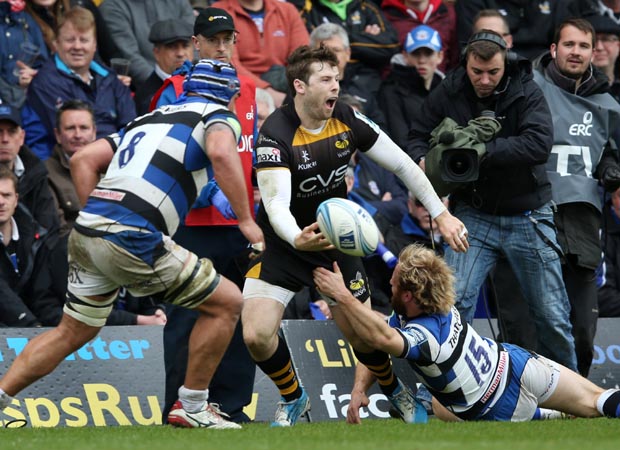 Whatever happened to the rugby playing cricketer or indeed the cricket loving rugby player? There was a time when the most gifted sportsmen in the land could combine both sports but now, as we approach the last week of June the 2013-14 rugby season is still ploughing on.
Whatever happened to the rugby playing cricketer or indeed the cricket loving rugby player? There was a time when the most gifted sportsmen in the land could combine both sports but now, as we approach the last week of June the 2013-14 rugby season is still ploughing on.
England and Wales are only now returning from summer tours while Scotland still have a final match to play, against South Africa this coming Saturday, before they can lay a 52-week season to rest.
That talent is probably still there but we will never really know. Hugo Southwell was highly rated by the then Sussex coach Peter Moores when he first appeared at Hove from Eastbourne College but eventually had to decide between cricket and rugby with the latter winning the day, much to Scotland's delight.
Wasps' Elliot Daly was an England U15 cricketer before becoming part of the Wasps academy and committing himself to rugby. Never the twain shall meet seems to be the motto these days.
“The day of the all-rounder is definitely over, alas, it can't ever happen again,” says Alastair Hignell who captained both the England Schools rugby and cricket teams before repeating that double at Cambridge University where he won four Blues in each sport. Away from university he played cricket professionally for Gloucestershire and won 14 England caps at full-back.
“The rugby season used to end on May 1 and start on September 1 so it was just about possible for a long while especially at university where the rugby season was very much condensed into the first term. It could get a bit hairy with Gloucestershire when the seasons overlapped. I distinctly remember playing a three-day County game starting on the Wednesday at Bristol one season, appearing at the Memorial Ground on the Saturday, returning to Glos for a one-dayer on the Sunday and then heading back to the Memorial Ground on the Monday for a one-off game against some Romanian tourists.
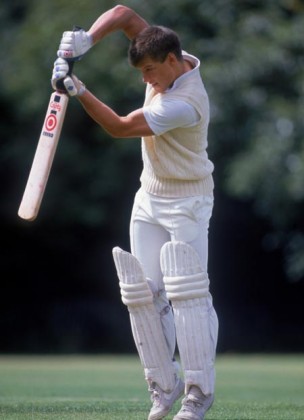
“Another summer, when I was still at Cambridge, I remember our rugby coach Ian Robertson was on deadline writing a rugby coaching book and desperately needed some pictures of real players putting what he preached into practice.
“So, wondering where he could whistle up a few rugby players in early June, he phoned up the cricket pavilion knowing that myself, Matthew Fosh, Paul Parker and Ian Greig would be there and hurriedly arranged for a photographer to rush round. We cobbled together some rugby kit, dashed down to Grange Road and did the photo-shoot in about half an hour if I recall. Then it was back to the cricket.
Hignell is one of a huge – seemingly completely disproportionate – number of class full-backs over the years who have a cricketing background (see below) but on delving a bit deeper perhaps it is more than just coincidence.
“Before the attacking role really came into play, full-back was all about catching and fielding the ball which demands pretty reasonable hand-eye co-ordination so I would offer that as one explanation as to the number of full-backs who were decent cricketers. Full-back is also just about the one position on the rugby pitch where you can stand back a little and observes what's in front of you, read the plays and assess the tactics.
“That's pretty much inbuilt into most cricketers as well and finally there is also sometimes that feeling of being right in the spotlight at full-back – like a batsman in the middle or a bowler running in – as you take a high ball or try and make a try-saving tackle or kick a goal. It's that individual game within the team context thing.”
Possibly the last of the cricketing-rugby all-rounders was Namibia's Rudi van Vuuren and he could only combine the sports because he was an amateur playing in the professional arena. A busy GP in Windhoek who also assists at various AIDs clinics in Namibia, Van Vuuren incredibly also found time to play in both the 2003 cricket and Rugby World Cups in Australia and South Africa respectively.
Injury curtailed his involvement in the former when Namibia badly missed his experience at fly-half but Van Vuuren did get on in the final game against Romania at Launceston to make history to become the first, and so far only, player ever to appear in both competitions.
At the cricket World Cup in South Africa he endured mixed fortunes. Against Australia he went for a massive 92 runs off his 10 overs of medium pace but he fared considerably better against India, taking 2-53 including the prized wicket of Sachin Tendulkar.
“I nearly got him with an absolute beauty when he was on six, it missed by this much,” recalls Van Vuuren, indicating a hair's breadth with his index finger and thumb. “I got him in the end, though. Only trouble was he had 150 at the time.”
“I'm not sure how I used to fit it all in but I suppose if I have one outstanding quality as a person it is time management. I can always hear the clock ticking. I got up at 5am every morning to fit in training – cricket or rugby depending on the season – before surgery started. And then, unless there was an emergency, I hit the playing fields or gym again after surgery ends. Everything dovetailed nicely. When I was at work the prospect of a game of rugby or cricket kept me fresh and when I was playing my sport I relaxed away from the medical side of thing. To lead such a life would of course have been impossible as a professional.”
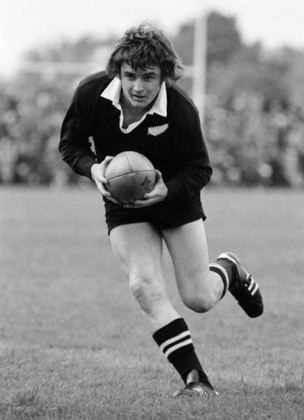
Historically the connections between the two games are long and enduring. Albert ‘Monkey' Hornby, not only captained both the England rugby and cricket teams he achieved that feat in the same calendar year. In 1882 when he lead England from his preferred position of full-back against Scotland at his home town club of Manchester and later that year he captained the England X1 against the touring Australians at the Oval.
That was less successful, indeed it was the famous occasion when England's heavy defeat was marked by the satirical obituary of English cricket in the Sporting Times which stated that “the body will be cremated and the ashes taken to Australia”. Hornby played Test rugby until he was 36 and represented Lancashire CCC for a remarkable 33 years, 17 as captain in two spells.
The other double England and rugby captain was Andrew Stoddart who added another feather to his cap by leading the 1888 Lions for much of their tour Australia and New Zealand following the death of the appointed captain Robert Seddon who died midway through the tour in a sculling accident on the River Hunter in New South Wales.
Stoddart led two separate England cricket tours to Australia, captained the England XV in four of his ten internationals and was also the inaugural captain of the Barbarian RFC. He came to an untimely end in 1915 when, beset by illness and debt, he took his own life.
New Zealander Martin Donnelly's brief but spectacular sporting career was badly interrupted by World War11 when he served in North Africa and Italy as a tank commander, later promoted to major. He celebrated surviving hostiles in one piece with a triumphant blaze of sporting genius starting with one of the biggest sixes ever seen at Lord's when he put it on the pavilion roof when scoring 133 for the Dominions X1 against England in 1945.
Lord's was always his favourite venue and in the space of four years he also scored 206 for New Zealand against England at the Home of Cricket, 162 for the Gentleman against the Players and 142 for Oxford against Cambridge. A fly-half for Oxford he looked a serious prospect and attracted the attention of the England selectors in 1947 but was played out of position against a very strong Ireland side at Lansdowne Road and was promptly dropped after a comprehensive 22-0 loss.
And then there was another New Zealander – the remarkable Brian McKechnie – who was the epitome of the rock solid and normally undemonstrative Kiwi who unwittingly got caught up in two of the most notorious sporting incidents of the 20th century.
In 1978, with Wales 12-10 up at the Arm's Park and heading towards a rare victory over New Zealand, it was he who stepped up to kick the match winning penalty after Andy Haden and Frank Oliver had conned a penalty out of referee Roger Quittenton, the former with a comically obvious ‘Hollywood' dive.
None of which was McKechnie's doing but nonetheless he just stepped up to the plate smacked the ball over and if memory serves celebrated with a clenched fist, a rare show of emotion.
Fast forward three years and McKechnie was making the last of his 14 ODI appearances for the Black Caps against Australia at the MCG and with one ball left New Zealand needed six to level the scores and an ‘impossible' seven to win the match.
A
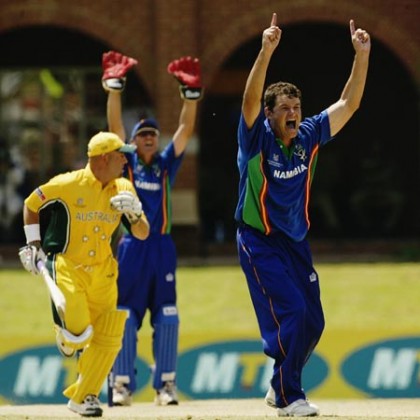
ustralia captain Greg Chappell had turned to his brother Trevor for the last over and the lesser known of the Chappell cricketing dynasty had already taken two wickets when he was instructed to bowl the final delivery underarm. Up in the TV commentary box brother Ian Chappell shouted: “No Greg no, you can't do that,” and wicketkeeper Rod Marsh was shaking his head but the fateful ball was delivered anyway with a disgusted
McKechnie playing an ironic forward defensive stoke before throwing his bat away in disgust.
Of course there are some west of the Severn Bridge who might argue that a certain amount of karma was being enacted.
“We were pissed off at the time, but I never thought it would become an issue,” recalled McKechnie many years later.
“Let's face it, the chances of hitting a six off that ball were remote. But I suppose we were denied the opportunity. A six would have only been a draw, we wouldn't have even won. Next day, the prime minister got involved, everyone was talking about it and a lot of people still are. I had no idea it would still be coming up 25 years later.”
“An hour or two after the game, when we'd all had a shower and were back at the hotel, we were joking about it, trying to work out how you could hit a six off an underarm. We tried a few years later to flick it up and hit it. You can flick it up if the ball is at the right pace, but the coordination of it is damn difficult. And then you'd have to hit it about 90 metres for it to be six at the MCG. I'd defy anyone to do that.”
All sorts of other names come to mind. Rob Andrew and Simon Halliday both scored first-class centuries in their Varsity days – against Notts and Kent respectively – while the 1974 Lions always maintain the best fly-half they encountered was a young Peter Kristen who starred for the Quaggas team in their 20-16 defeat against the all-conquering tourists.
A bad knee injury playing for Western Province a few weeks later finished him at rugby but as a cricketer he went from strength to strength scoring 57 first-class centuries although the apartheid years meant he played just 12 Tests.
Down in Wales, Maurice Turnbull was a fine Wales scrum-half and talented England cricketer while Wilf Wooller was a legendary Wales centre and dominant figure at Glamorgan CCC.
Steve James scored no fewer than 47 first-class tons with Glamorgan while still finding time, when not on tour, to play for his native Lydney RFC. Former England U23 rugby captain Graham Barlow, an athletic centre who played in three Tests and six ODIs for England, was reckoned to be one of the world's best cover fielders before knee and back injuries – legacy of his rugby days? – struck during his time at Middlesex.
There are many others but space is limited. The list of c ricketing rugby players is long, eclectic and even rather eccentric but, unfortunately, is now at an end. We won't be seeing their likes again.


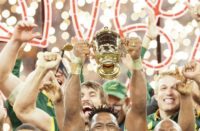

























Pingback: สุทธิพัฒน์
Pingback: autoplay168
Pingback: บริการขนย้ายของ